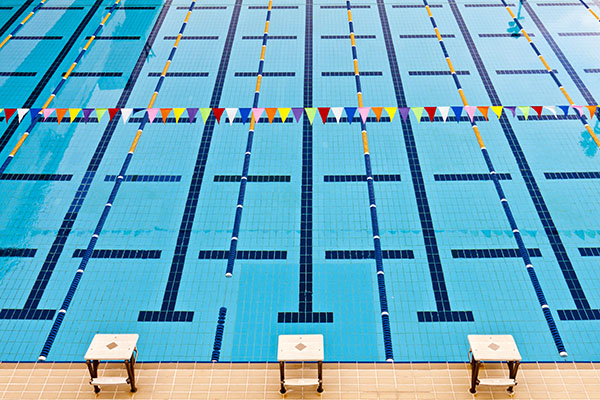Those who fear contracting a water-borne illness caused by pollution at the shore or ingesting a killer amoeba (Naegleria fowleri) at a freshwater lake might instead opt to visit a swimming pool. After all, most pool water is hygienically treated. In reality, though, not all pathogens in pools are killed immediately by the common disinfectant, chlorine. In addition, chlorine reacts with ammonia from sweat or urine as well as with organic compounds—such as those found in personal care products and sunscreen—to form potentially harmful disinfection by-products (DBPs). As a result, recreational swimmers, or even just “dunkers,” can contract illnesses from pools. These include gastrointestinal, skin, ear, respiratory, and eye irritations and infections. See also: Antimicrobial agents; Chlorine; Naegleria fowleri infections due to drought; Water-borne disease; Water pollution; Water treatment

Given these concerns, are pools safe? The U.S. Environmental Protection Agency (EPA) has identified more than 100 DBPs in swimming pool water, including halomethanes, halonitriles, haloketones, haloaldehydes, halonitromethanes, haloacids, and halodiacids. Some DBPs, such as chloroform (a trihalomethane), are even considered carcinogenic. However, according to the U.S. Centers for Disease Control and Prevention (CDC), swimming is an excellent form of exercise, and well-maintained pools are, overall, safe. See also: Mutagens and carcinogens
To clarify the effectiveness of water treatment methods for reducing organic substances and DBPs in swimming pool water, researchers reporting in the journal Environmental Science & Technology (June 2019) compared the effectiveness of seven combinations of treatment methods based on four treatment steps: (1) coagulation/flocculation; (2) sand filtration, ultrafiltration, or absorption by powdered activated carbon; (3) granular activated carbon filtration, ultraviolet (UV) irradiation, ultrafiltration, or sand filtration; and (3) pH adjustment/chlorination. To ensure controlled conditions, the researchers used a pilot-scale swimming pool system to which they added compounds to simulate organic and body-fluid contaminates and added chlorine at recommended treatment levels. See also: Activated carbon; Filtration; Ultraviolet radiation
The researchers found that the most effective, and recommended, treatment process for lowering contaminant and DBP concentrations consisted of a combination of coagulation and sand filtration, along with granular activated carbon filtration. This treatment process did not completely remove DBPs. One DBP, trichloramine, formed faster in the pool than it could be removed. But, considering all the pool water treatment methods available today, their results pointed toward best practices. Nevertheless, to help keep DBP levels low for safe swimming, it is important to shower to remove sweat and personal care products prior to entering a pool. And, ideally, it is best to avoid swallowing pool water.





